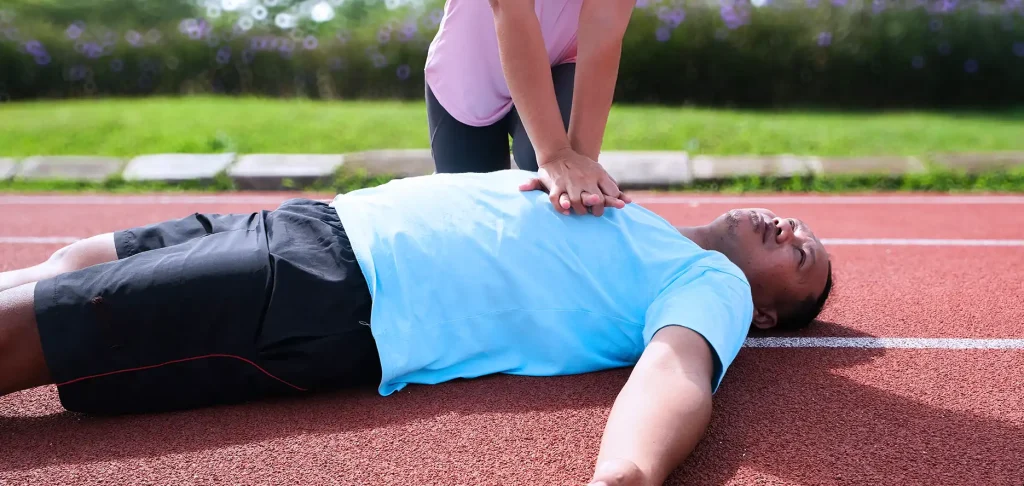Lately, Americans have really caught the marathon bug. Races that used to feel like something only die-hard athletes attempted are now everywhere, with runners from all walks of life signing up. And there’s good news for everyone lacing up their shoes: a new study shows that dying from cardiac arrest during a marathon is a lot less common than it used to be. That’s a big deal — not just for the runners, but for doctors, race organizers, and anyone who cares about heart disease prevention.
Jonathan Kim, a cardiologist and associate professor at Emory, has been tracking this for years. Back in 2012, he published a landmark study on sudden cardiac arrests at long-distance races. Now, he’s back with new research in JAMA, digging into what’s changed more than a decade later. If you’re involved in organizing races or you’re part of a heart care center like Sun City, you’ll want to pay attention.
Marathons Are Packed — But Cardiac Arrests Aren’t Spiking

From 2010 to 2023, over 29 million people finished marathons in the U.S. That’s nearly triple what we saw in the previous decade. You’d think more people running would mean more heart problems, right? But Kim’s numbers show that the rate of cardiac arrests during marathons has barely budged. It’s now 0.60 per 100,000 runners, compared to 0.54 before.
Here’s where it gets interesting: while the number of cardiac arrests isn’t changing much, far fewer are deadly. The death rate dropped from 0.39 per 100,000 runners down to 0.19. That’s about a 50% drop. Clearly, something’s working — and it’s not just luck. Emergency response and general awareness have gotten a whole lot better.
For more details, you can refer to the below link:
https://jamanetwork.com/journals/jama/fullarticle/2832121
Places like heart care center in Sun City and teams led by some of the Best Cardiologists in Sun City are at the heart of these changes, shaping how communities tackle heart risks around big events.
So, Why Are More Runners Surviving?

One of the headaches in researching this stuff is that there’s no central database for race emergencies. Kim’s team went old-school: they reached out to race directors (and heard back from about 70%), dug through news stories, and even spoke to survivors. They pieced together what really happened on the ground when someone’s heart stopped during a race.
A pattern jumped out. Nearly every survivor got rapid CPR — and, even more crucial, quick access to an AED (automated external defibrillator).
Think about it: we’ve seen airports and casinos save lives because they have AEDs handy and people trained to use them. Now, marathons are catching on. You’ll find AEDs along the course, and fellow runners are more likely to know what to do if someone collapses. That kind of preparation saves lives — and it’s exactly the kind of thing the Best Cardiologists in Sun City have been pushing for.
Who’s Most at Risk?
The study also backs up what we’ve seen before. Cardiac arrests during marathons hit men a lot more often than women, and full marathoners are at higher risk than half-marathoners. Age plays a big role, too. Older runners — especially those who don’t know they have heart problems — are overrepresented among the cases.
But Kim is clear: this isn’t about telling older runners or higher-risk people to stay home. It’s a chance to catch heart issues early and give people the right training plans.
A Roadmap for Safer Running Communities and Future Races

Cardiac arrest rates during long-distance races haven’t really budged in the past twenty years, but survival rates? Those have shot up — and that’s real progress worth paying attention to.
Here’s what’s been making the difference:
- Runners, volunteers, and even spectators are learning CPR.
- Organizers are getting smarter about where they put AEDs — you’ll see them all along the course now.
- There’s more talk about warning signs, not just on race day but way before.
- And honestly, people are taking pre-race checkups more seriously, especially if they’re older or have health conditions.
Looking Ahead
The take-home is pretty simple. So, whether you’re lacing up for your very first marathon or you’ve lost count by now, here’s the bottom line: Know what’s up. Prepare yourself. Put your health first. Thanks to better medical backup, faster emergency responses, and a real push for heart disease prevention, long-distance running just keeps getting safer. That’s something every runner can feel good about.
When doctors, race organizers, and runners work together, bad outcomes get even rarer. Clinics and cardiology teams in Sun City are already weaving these lessons into community programs and screening drives. If we keep this up, marathons will only get safer — and more runners will live to tell the tale.



